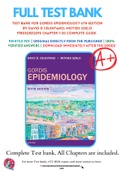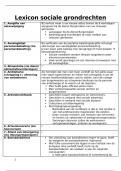Examen
Test Bank For Gordis Epidemiology 6th Edition By David D Celentano; Moyses Szklo 9780323552295 Chapter 1-20 Complete Guide .
Cours
Gordis Epidemiology 6th Edition
Établissement
Gordis Epidemiology 6th Edition
Test Bank For Gordis Epidemiology 6th Edition By David D Celentano; Moyses Szklo 2295, 3 , 2318, 5
1 Introduction
2 The Dynamics of Disease Transmission
3 The Occurrence of Disease
4 The Occurrence of Disease
5 Assessing the Validity and Reliability of Diagnostic and Screening Tests
...
[Montrer plus]
Publié le
17 décembre 2022
Nombre de pages
168
Écrit en
2022/2023
Type
Examen
Contient
Questions et réponses
Titre de l’ouvrage: Gordis Epidemiology
Auteur(s): David D. Celentano, Moyses Szklo
Édition: 2018 ISBN: 9780323552295 Édition: Inconnu
Examen
Test Bank for Gordis Epidemiology 6th Edition by David D Celentano 9780323552295 (Complete 20 Chapters)
Examen
Test Bank for Gordis Epidemiology, 6th Edition by Celentano, 9780323552295, Covering Chapters 1-20 | Includes Rationales
Examen
Test Bank for Gordis Epidemiology 6th Edition by David D Celentano
Tout pour ce livre (51)
Établissement
Gordis Epidemiology 6th Edition
Cours
Gordis Epidemiology 6th Edition
S'abonner
€19,98
Garantie de satisfaction à 100%
Disponible immédiatement après paiement
En ligne et en PDF
Tu n'es attaché à rien
PRINTED PDF | ORIGINAL DIRECTLY FROM THE PUBLISHER | 100%





